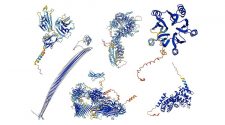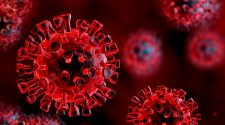Cyanidin is a powerful anthocyanin and phytonutrient (a group of non-essential, plant based chemical compounds that have numerous health benefits in humans) which can greatly improve your chances of staying healthy and disease free. In this article I will be providing a full breakdown of this anthocyanin and the main food sources.
1) DISCOVERY:
Cyanidin was initially discovered in 1938 by Albert Szent-Gyorgyi along with the other flavonoids (a group of phytonutrients which includes the anthocyanins). Initially, he believed the flavonoids were vitamins and gave them the name vitamin P but it was later discovered that they are not essential in humans so not technically vitamins.
2) MAIN FUNCTIONS:
Cyanidin is a very powerful phytonutrient which acts as an anti-inflammatory (a substance that prevents unnecessary inflammation within the body), an antioxidant (a substance which fights the harmful free radicals that are released as by-products of oxygen related reactions) and an antitoxic (a substance that fights harmful toxins within the body).
Additionally, this anthocyanin prevents atherosclerosis (a condition where hard plaques form in the walls of the arteries, restrict the flow of blood and ultimately increase your heart disease risk), prevents various types of cancer (a health condition which develops when your cells start to grow in a rapid, uncontrollable way) and treats type 2 diabetes (a health condition where your blood glucose levels become extremely high).
Finally, cyanidin can reduce your risk of developing heart disease and protect your skin cells from damaging ultraviolet (UV) rays.
3) FOOD SOURCES:
Like the majority of anthocyanins, berries are the richest source of cyanidin. Bilberries (112.59 milligrams (mg) per 100 grams (g)), blackberries (90.31mg per 100g), black raspberries (323.47mg per 100g), chokeberries (435.78mg per 100g), cranberries (41.81mg per 100g), elderberries ( 758.48mg per 100g) and lingonberries (44.21mg per 100g) are all brilliant sources.
Certain other fruits, nuts and vegetables including blackcurrants (85.63mg per 100g), cowpeas (94.72mg per 100g), red cabbage (72.86mg per 100g) and sweet cherries (75.18mg per 100g) are also very rich in this anthocyanin.
4) CYANIDIN SUMMARY:
As you can see, cyanidin is a powerful phytonutrient and 1 of the main drivers behind the health benefits of berries. It can prevent cancer and diabetes, keep your blood healthy and much more. So if you are not currently incorporating anthocyanin rich berries into your diet, now is the time to change. Have yogurt and berries for breakfast, make a berry based fruit salad for dessert or even snack on them throughout the day and you will quickly start to enjoy all the benefits cyanidin has to offer.





![Fortnite's Black Hole Is Over [Updating]](https://newsfortomorrow.com/wp-content/uploads/2019/10/Fortnites-Black-Hole-Is-Over-Updating-225x125.png)







